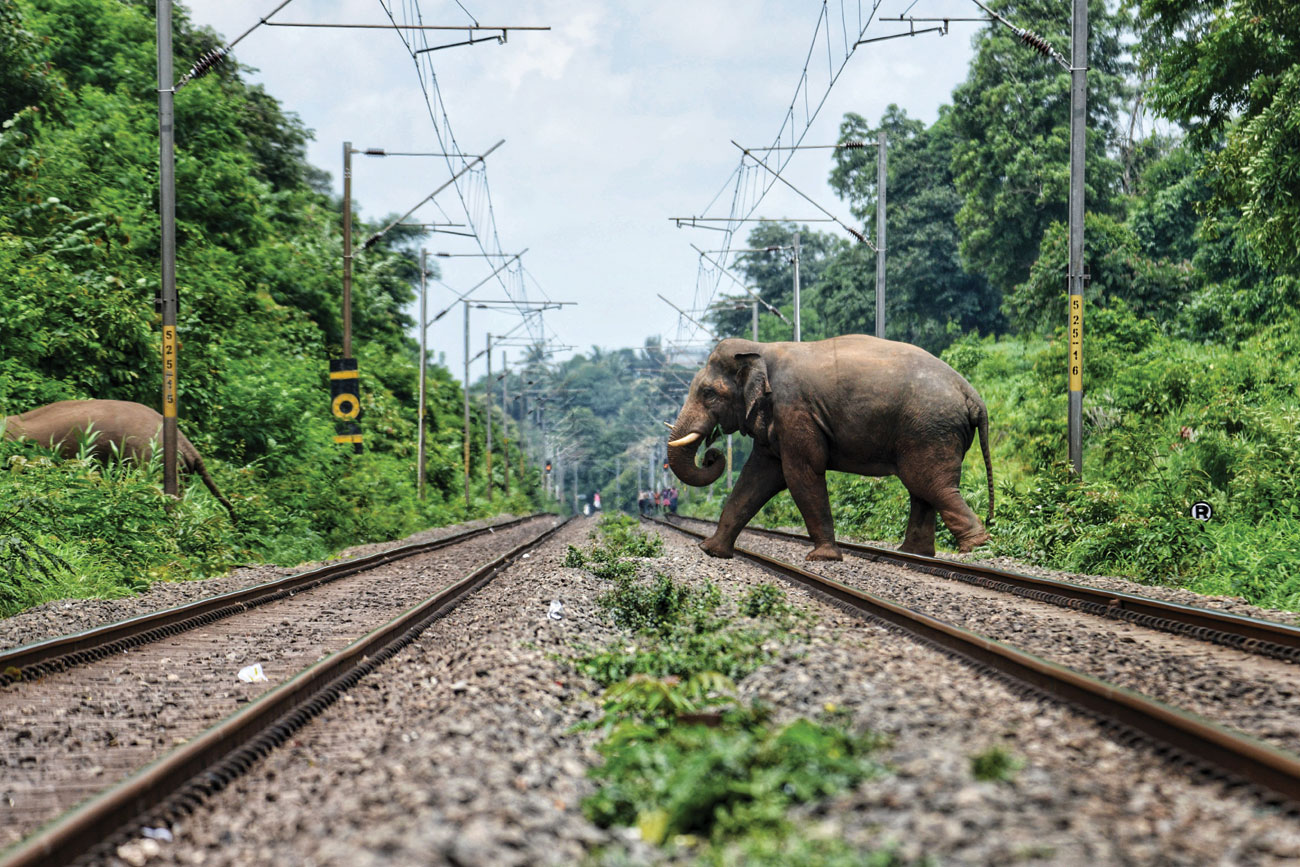Give Walayar’s Elephants The Right Of Way
First published on
February 01, 2023
By Arul Badusha and Abhijith A.V.
The tragic incident of the death of two wild elephants Elephas maximus near Walayar after being hit by a train has set ablaze a series of arguments that have re-emerged after years of silence. Thirty such cases of wildlife deaths across the Kerala-Tamil Nadu border lurk behind this silent period of continued injustice on these pachyderms. This particular incident in Kerala’s Walayar town in the Palakkad district, the first to be reported in the past three years in Kerala, revived the attention of media, environmentalists and the government, including that of the Forest and Railway Department. The apathy toward wild animal safety, particularly that of the endangered Asian elephant, in a terrain that is known to be its stronghold, shone a spotlight on an issue that the authorities wanted to keep away from the public eye. This is precisely why the history of this issue needs to be explored.
The Western Ghats, identified as a biodiversity hotspot, runs parallel to the Western coast of the Indian Subcontinent for approximately 1,600 km. This mountain chain is interrupted only by a few geographical gaps, of which the Palakkad gap is the largest, separating the mountains by about 40 km. While this creates a natural barrier for the dispersal of wildlife, humans have been taking advantage of this relatively plain terrain to establish linear infrastructures, including roads and railway lines, to facilitate trade and transportation. This is almost routine in India today, but this particular case is unique.

Elephants cross the busy Kanjikode-Walayar railway line, which runs across prime forest land that houses vital water resources for migrating elephants. Photo: Aneesh Shankarankutty.
The Palakkad gap, which creates an abrupt blockage on the migrating routes of the Asian elephant, results in large-scale gatherings of these gentle giants in and around Walayar. The railway track (the A-line) that cuts through this critical habitat was established by the British in 1861. Water scarcity and intrusive agricultural practices in surrounding areas that were once relatively undisturbed has forced the elephants to move into a human-dominated landscape. The resultant conflict was, therefore, a predictable outcome, and the railway tracks added to the existing trauma for the elephants. As if this were not enough, another 23 km.-long B-lane was commissioned in 1974 between Walayar and Kanjikode by levelling and demolishing the steep mountain slopes. The area encapsulated by these lanes includes a forest stretch that covers an area of about two square kilometres, like an island, which houses vital water resources for migrating elephants. With over 100 trains plying here every day, the elephants are now required to make this perilous journey across the two tracks to quench their thirst. To add to this problem, the current layout of the two tracks – more often than not – causes the pachyderms to be trapped in this artificially created forest island at the risk of life and limb. This is why the number of elephant deaths in the area have risen.
The Forest Department has tried to address the issue by setting up geo-fencing combined with animal monitoring systems. These include the installation of Artificial Intelligence (AI) visual census, smart motion-detection cameras, solar fencing, watch towers, and the deployment of patrolling teams to survey the landscape. Concerned with elephant mortality, the Madras High Court ordered the trains to maintain a maximum speed of 65 kmph. and 45 kmph. during the morning and night hours. Despite such measures, elephant deaths continue to rise. Clearly, the Forest and the Railway Departments will need to adopt better and different strategies to save the elephants.
A group of environmentalists including the members of the Wayanad Prakriti Samrakshana Samiti have intervened, expressing concern for the ineffective protocols put in place by both the Forest and Railway Departments. The group organised a march to the Railway Divisional Manager’s office at Palakkad on November 4, 2022, and presented a series of suggestions including the establishment of under or overpasses. But these are going to take a long time to put in place. In the interim, a suggestion has been made to reduce the speed of trains to 30 kmph. along this stretch, together with diverting trains to the A-line, to reduce the risk of elephant mortality.
The Sanctuary Nature Foundation wholeheartedly endorses the appeals made by the group of environmentalists of Walayar. Public opinion makes a huge difference and we urge Sanctuary Asia readers to add their strength to that of others working to keep elephants safe by writing a polite, but unambiguous letter to the authorities:
1. Send an email to the Hon. Minister Railways, Shri Ashwini Vaishnaw, with a copy to the Divisional Manager’s office, Palakkad asking them to a) reduce the speed of trains along this route and b) divert trains that do not need to halt at the nearby station.
2. Write to the Minister of Environment, Forest and Climate Change at mefcc@gov.in and the Minister of Railways at officeofmr@gov.in asking that the above terms and conditions be conveyed to the Minister of Railways insisting that thorough scientific studies be conducted for future railway projects through and near wildlife areas. The plan must include under and over passes, depending on the nature of the animals using that specific route.
3. Do feel free to share copies of your mail on your social media handles and copy the authors and Sanctuary.
Arul Badusha and Abhijith A.V. are environmental activists based in Wayanad, Kerala. They work on various conservation activities in and around Wayanad, other parts of Kerala, and the neighbouring states of Karnataka and Tamil Nadu.


